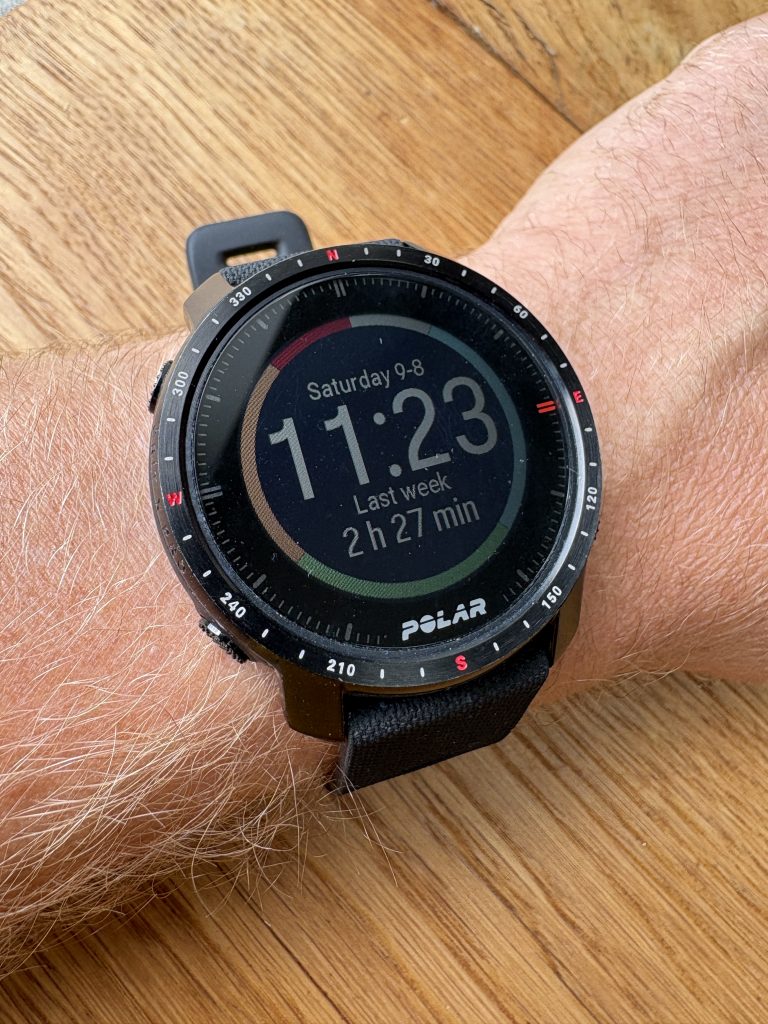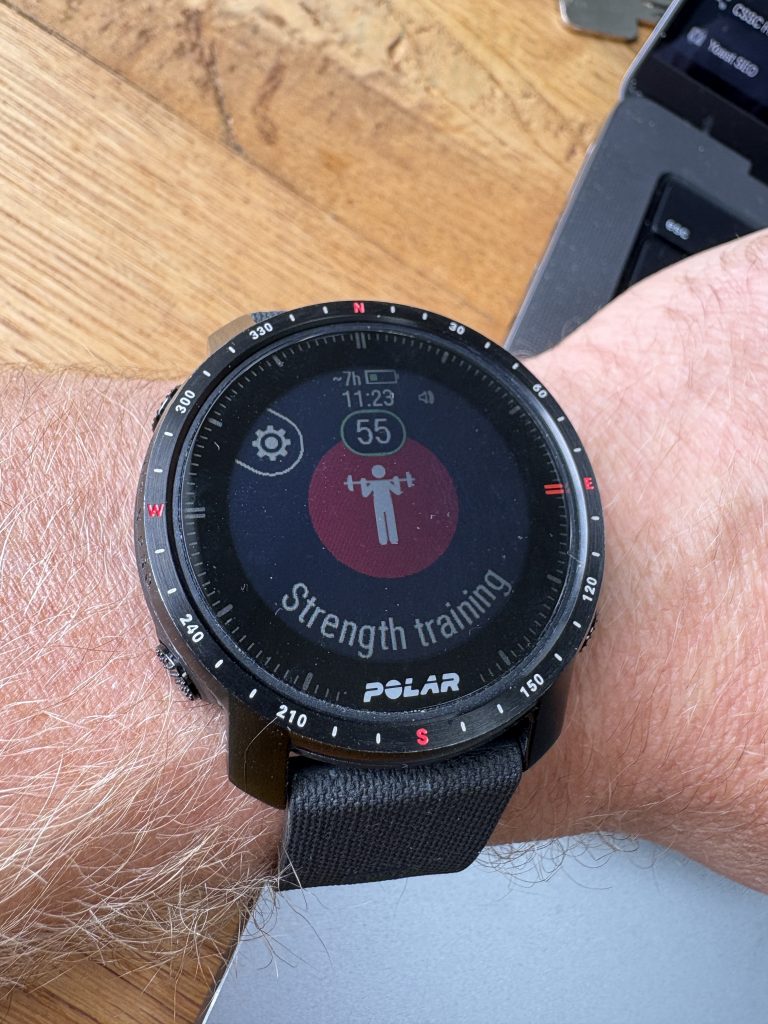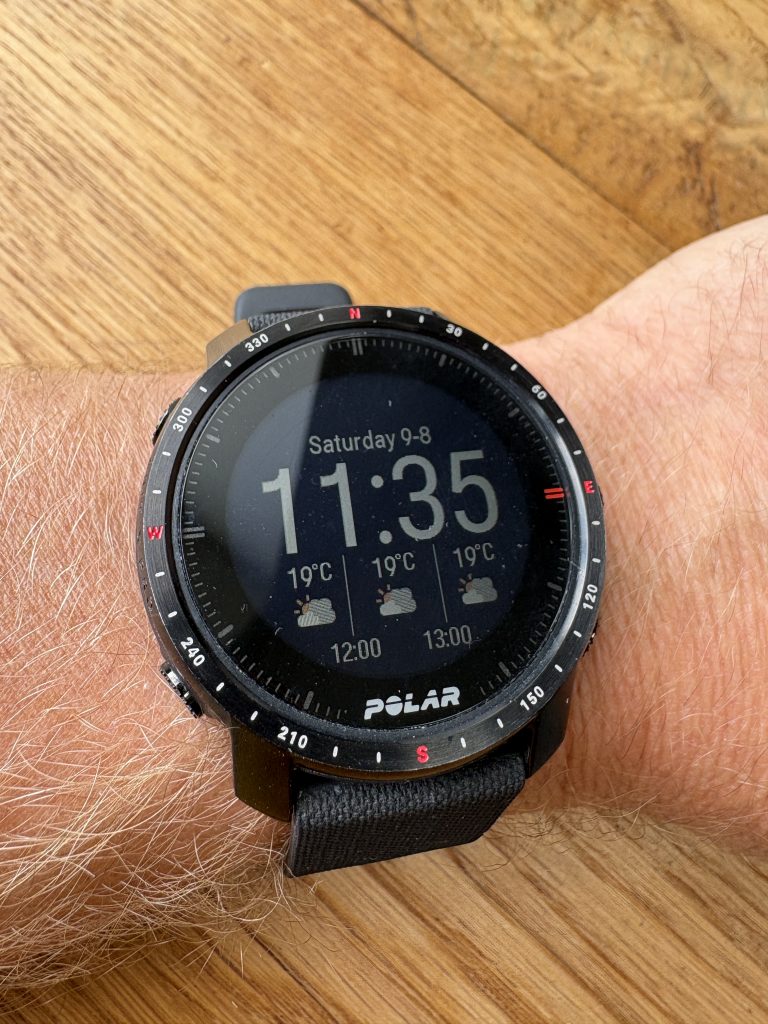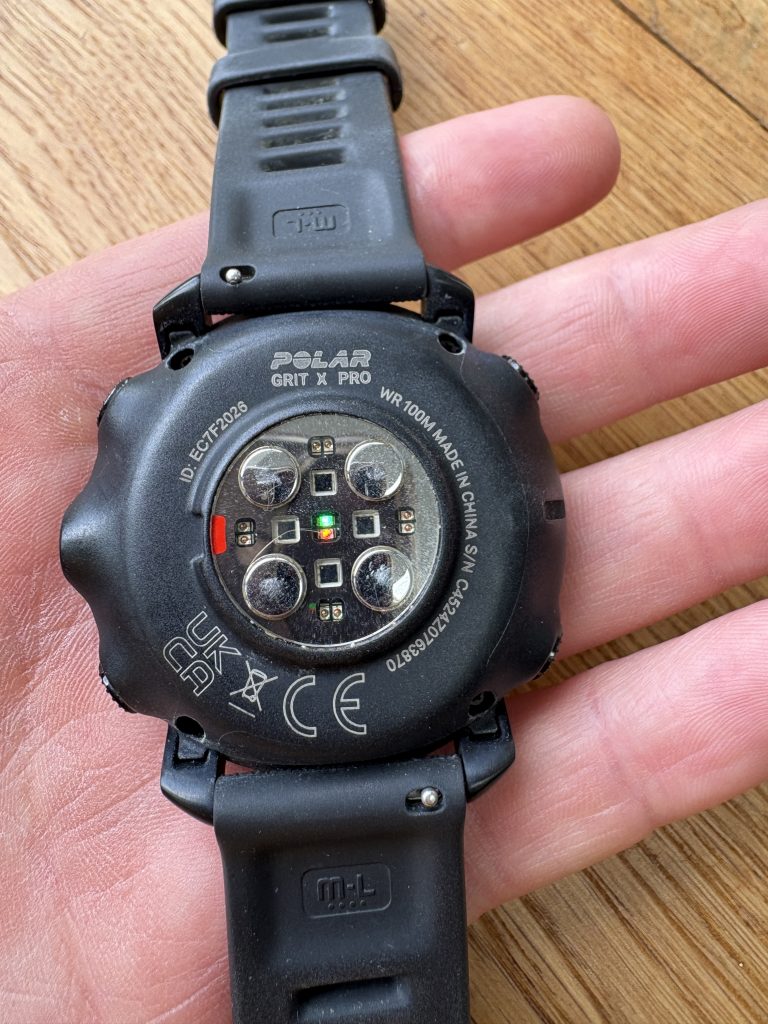Polar Grit X Pro Review from a Personal Trainer
I’ve got a Polar Grit X Pro review for you, having owned and used one for several months. I’ve battle-tested it, taken in the water, across countries and used it to track a couple of hundred activities.
I’m on my fourth Polar watch. That in itself tells you what I think about Polar generally. I’ve always found them to be the best combination of accuracy, build quality, value, versatility, and functionality. The Polar Grit X Pro is my favourite so far, for several reasons we’ll get into in this review.
This review is going to focus on the user experience, rather than the intricacies of the technology behind the device. I see little value in discussing GPS sampling rates, because if that’s the kind of thing that you’re interested in, you’ll go directly to Polar for the details on that.
Polar Grit X Pro Build Quality
The immediate standout feature is the build quality. My previous Polar watch (Vantage V) was pretty solid, but I needed to replace the strap after a couple of years, and eventually one of the buttons stopped working.
With the Polar Grit X Pro, the strap seems OK (I’m never too worried about straps, because they’re easy to replace), the buttons are a significant upgrade and the face is made with sapphire glass.
Polar says it’s built for military-level durability. Whilst I can’t claim to be rolling around in trenches and dodging bullets, I’m travelling, working in the garden, running the gym, working out most days, going in the sea and the beach etc, and there’s literally not a single scratch on it.
Another feature I appreciate is the ultra-long battery life. With gym workouts I can go 5-7 days on a single charge. If I use GPS, you can cut that down to 3-4 days.

Sport Profiles
As with the previous watches, Polar offers 100 different activities to choose from when it comes to your tracker. It means theoretically you can differentiate between a ‘strength training’ workout, or a ‘kettlebell workout’, for example.

I don’t believe that the sampling or the heart rate data it accumulates changes between different types of workouts, but it will help you keep track of the variety of training you do, I suppose.
I generally use a handful of workout profiles to track…
- HIIT
- Strength Training
- Circuit Training
- Other Indoor
- Other Outdoor
- Walking
- Cycling
- Indoor Cycling
- Indoor Rowing
Quirky, Yet Useable Features of the Polar Grit X Pro
Odd section, don’t you think?
Here’s the thing, though – a lot of tech has features for the sake of features (Garmin, I’m looking at you). The kind of things you never really use, but the device is capable of anyway. Whilst the Polar Grit X Pro has plenty of those, here’s the features I actually use…
Weather Forecasting
If (like me), you live in a country where the weather is changeable, it’s handy to have a weather forecasting device with you so you know what to expect. The watch forecasts the weather over the next couple of hours and on the whole, I’ve found it to be reasonably accurate – especially in the UK.
It lost its way a little on a recent trip to Costa Rica, but even the UK Met office was struggling to keep track of the weather there too!

Running Maps
You can upload your running routes to the watch, so it’ll give you turn-by-turn guidance as you head out for a run. This is especially handy if you’re running a new route, or you’re in an area you don’t know.
A couple of features also enhance it – ‘Track Back’, which helps you return to the starting point via the same route you’ve just followed, and ‘Back to Start’, which gives you the shortest possible route back to your starting location. Great for runners and cyclists.
Polar App Support
I’ve said plenty of times on this website, I’m a big fan of the app support from Polar. The Flow app is a really good, solid training tool that provides great visibility on your training data, sleep data, etc. Compared with similar technologies, it’s a really useful tool for monitoring your training, general activity levels, calorie burn, recovery status etc.
Is the Polar Grit X Pro Accurate?
During my research for this Polar Grit X Pro review, I came across a fascinating research study, which looked specifically at this watch. The overarching aim of the study was to look at the accuracy of the energy expenditure data of the watch, but in the research they assessed the heart rate monitoring accuracy.
The reason they did this is that the Polar Grit X Pro uses heart rate data to help assess calorie burn rates.
The user inputs other data – height, weight, activity levels, age etc when they set the watch up. Using this data, plus the recorded data from your heart rate, the watch will make an assumption of the calories you’ve burned during the day/activity.
And here’s where it gets interesting…
The researchers noted… ‘Aggregated HR zone data indicated that the Polar Grit X Pro watch had good to excellent interrater reliability compared with indirect calorimetry (metabolic cart) at estimating energy expenditure’
In English, the watch accurately estimated calories burned.
Furthermore, the researchers also noted… ‘Aggregated HR zone data indicated that the Polar Grit X Pro watch had good to excellent interrater reliability’
Now you might think, ‘of course the heart rate data is accurate – if it wasn’t, you’d have poor input data in the first place, meaning the calorie burn estimation would be wrong’. And frankly, you’d be right. The important point though, is it puts to bed the concern that wearable heart rate monitors are all useless. This research shows that actually, the Polar Grit X Pro is actually very good.
In my experience, it’s solid. Occasionally, it’ll be a bit ‘laggy’, where it takes a few moments to catch up with my actual heart rate, but overall, I’ve got no complaints about how it measures heart rate. As long as you secure it properly, it’ll do a good job at monitoring your heart rate.
Fitness Watch Limitations
I’ve performed hundreds of workouts ahead of this Polar Grit X Pro review, and the only ones where I think there’s a potential limitation in functionality are during swimming workouts.
On a recent trip to Costa Rica, I performed 3 swimming sessions. I’d be swimming for around 30 minutes per time, wearing the watch throughout. On one particular occasion, it didn’t accurately count my lengths, under-reporting them by around 30%.
And before you ask, yes, the watch was set to the correct pool length, and yes, I had been counting the lengths so knew how many I’d done.
I found the watch struggled with some of the heart rate recording, in the sense that it was a bit ‘laggier’ than usual. After a sprint length where my heart was POUNDING, it was taking a good 30 seconds or so to move from 110 beats per minute upwards! That makes me question how accurate the calorie burn assessment of swimming workouts would be.
Given I don’t do many swimming workouts, it’s not a huge deal to me, but it’s something to be aware of for more frequent swimmers.
Sleep Information on the Polar Grit X Pro
I’m going to address this issue from two points – the first one is what Polar tells us. The second one is my lived experience of using the watch. They’re very different.
What Polar Tells us About Sleep Monitoring
Taken directly from the Polar website… ‘Sleep Plus Stages automatically tracks the amount and quality of your sleep and shows you how long you spent in each sleep stage. It gathers your sleep time and sleep quality components into one easily glanceable value, sleep score. Sleep score tells you how well you slept compared to the indicators of a good night’s sleep based on the current sleep science’.
OK, that’s about as vague as you can get. It tells us very little about what it measures. It doesn’t tell us anything at all about how it measures those things. Let’s do some more research…
What Further Reading Tells us About Sleep Monitoring
According to a study titled ‘Deconstructing Commercial Wearable Technology: Contributions toward Accurate and Free-Living Monitoring of Sleep‘, the Polar Grit X Pro uses the following methods to gather sleep data…
- Accelerometer (3-axis)
- ECG/Electrical conductance
- PPG
The accelerometer measures the amount of movement in your sleep. It assumes that the more you’re moving, the more awake you are.
The ECG (Electrocardiogram) monitors the electrical signals your heart produces as it beats. The electrical conductance element of the measurement measures how easily electrical signals move through your skin. When you’re sweating, for example, your skin conducts electricity more effectively. This could be a sign of high stress, therefore poor sleep.
PPG (photoplethysmography) shines light onto the blood vessels to monitor the amount of blood flow through them. It shines light on the vessels and monitors how much comes back. This information allows the device to accurately monitor heart rate. Depending on the technology, this can then measure pulse, heart rate variability, blood oxygen saturation and breathing rates.
Here’s the back of watch, where the measurement tech lives…

All sounds impressive. And it is. Potentially.
So by picking up information from various sources, it appears that Polar (as well as other watches claiming to monitor sleep) use a combination of movement during sleep, heart rate data, and breathing patterns collected through sensors on the watch.
It then runs this data through an algorithm to makes predictions about the quality of your sleep and how effectively rested you are.
Does it Work? My Lived Experience
No.
The sleep assessment funciton is rubbish. It’s just crap. I love the watch overall, and the poor sleep measurement isn’t a deal breaker for me – I don’t need a watch to tell me how I’ve slept.
You’ll be given a daily update on the sleep menu about your ANS charge (autonomic nervous system) and your sleep charge. You’ll be given a score for each (higher quality sleep and recovery means a higher number).
For the ANS charge, you’ll be told about your Heart Rate Variability, breathing rates, etc. For your sleep charge, you’ll be given details about your sleep quality, continuity, sleep cycles, etc. For the vast majority of users, it’s probably not that interesting, but I like to keep tabs on that kind of thing.
The problem is it’s just so inconsistent, and it frequently tells me I’ve had a really poor sleep when actually, I’ve slept very well.
I can put this down to one of four factors…
- My watch has moved away from my wrist slightly in my sleep, so data hasn’t been collected properly
- I move a lot in my sleep, so the accelerometer has assumed I’m awake
- I sweat more than most in my sleep, so the electrical conductance is higher
- It’s just not very good at assessing sleep
It could be one or a combination of these.
I don’t think it’s number 4, because the watch is good at many other things. I also know there are times when my sleep data has accurately reflected how I felt I slept. Looking online though, I’m not the only Polar Grit X Pro user who has noticed the same thing with the watch.
My problem with the sleep assessment is its predictive nature. You can’t claim to measure and monitor sleep, but your models use data to predict. Prediction is another word for ‘guess’. What makes this worse is the fact that if the original input data isn’t accurate in the first place, it makes the whole thing a sham.
Ultimately though, I’m using the watch to monitor my activity, not my lack of activity.
Polar Grit X Pro Review – Final Thoughts
I opened this Polar Grit X Pro review by telling you that this is my fourth Polar watch, and I’ll close it by telling you it’s the best one I’ve had by a mile.
I’ve liked all of my previous watches, but this one is better in every category. Build quality, accuracy, aesthetics, versatility, functionality and usability. It does cost more than my previous watches, but in this case you’re getting what you pay for.
In full disclosure, I got mine in the Polar outlet sale, but keep your eyes peeled on Amazon, because I’ve seen it pop up for bargain prices there. I paid around £330 (I think – it was quite a while ago!) but I’ve seen it as low as £299.
Whilst it not without its limitations (sleep score being the main one), overall it’s a superb fitness tracker and smart watch. It looks great, it’s built to be TOUGH, it’s feature-heavy, it’s significantly cheaper than many of its rivals, it’s accurate and will easily deal with almost any activity you perform.
Having been a user of fitness trackers for a couple of decades, I can safely say that the Polar Grit X Pro is a fantastic watch and offers great value. There are newer watches, there are watches with more features and there are cheaper watches but I’m yet to find a better blend of price, functionality and accuracy.
If you’re looking for a great fitness tracker watch, the Polar Grit X Pro gets a big recommendation from me.
One thought on “Polar Grit X Pro Review from a Personal Trainer”